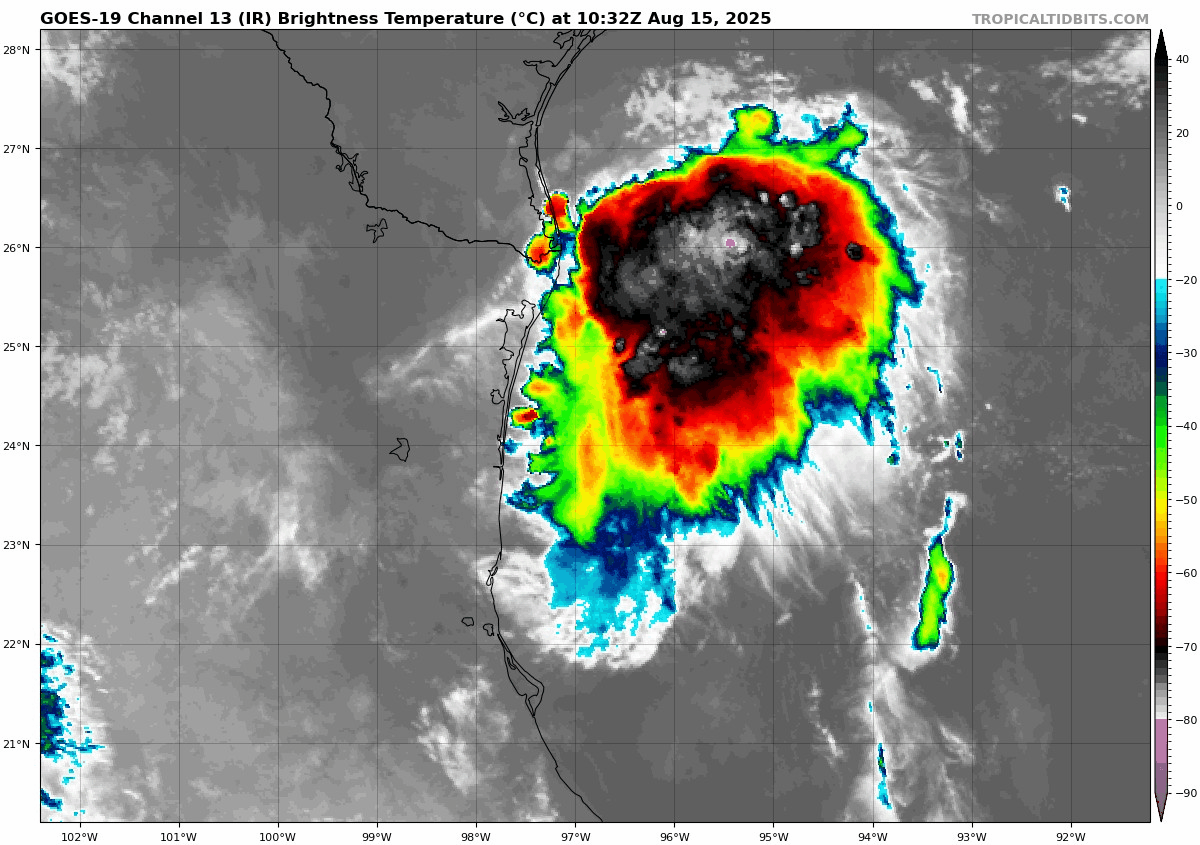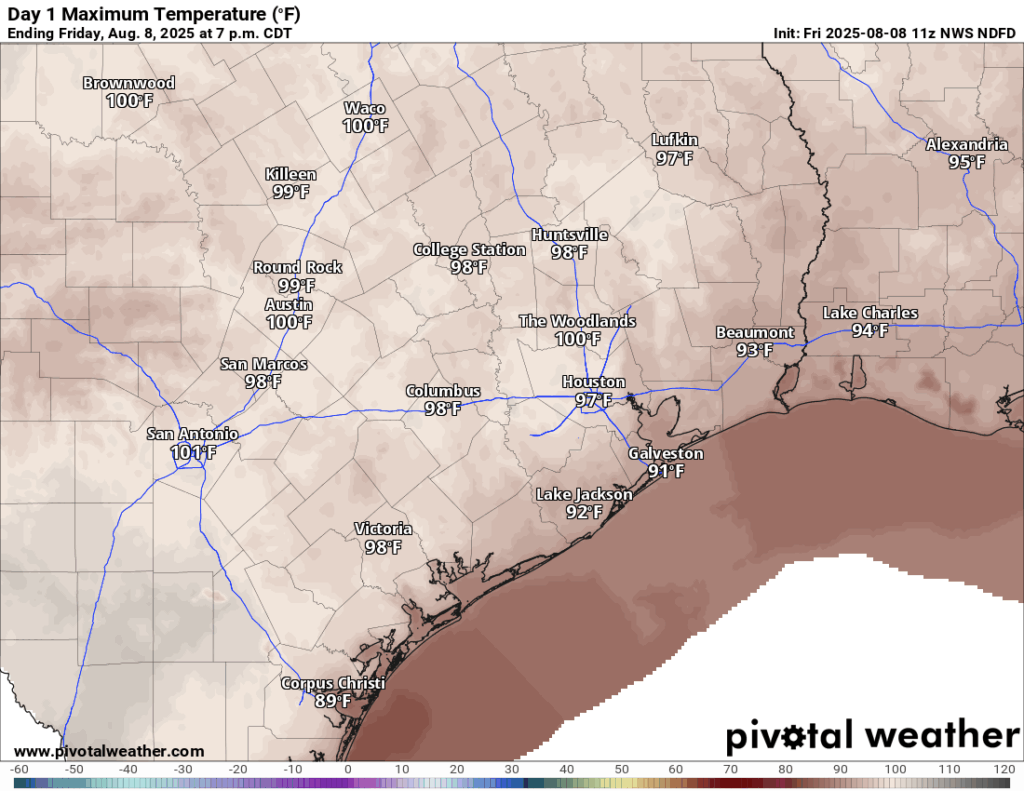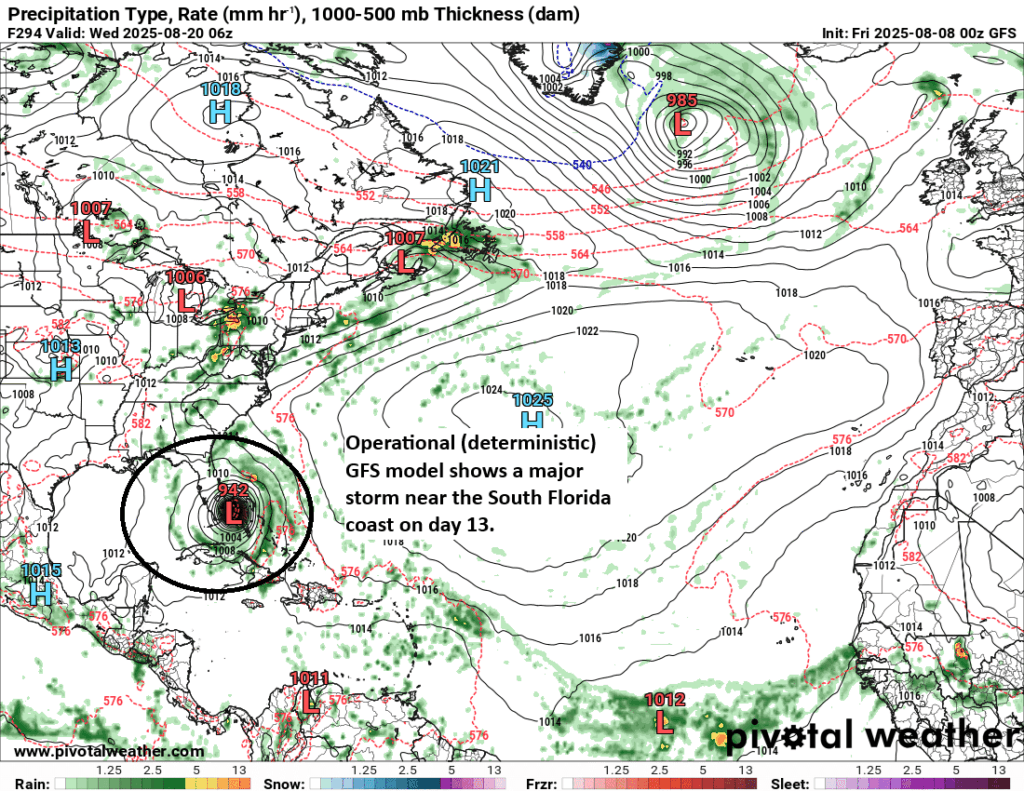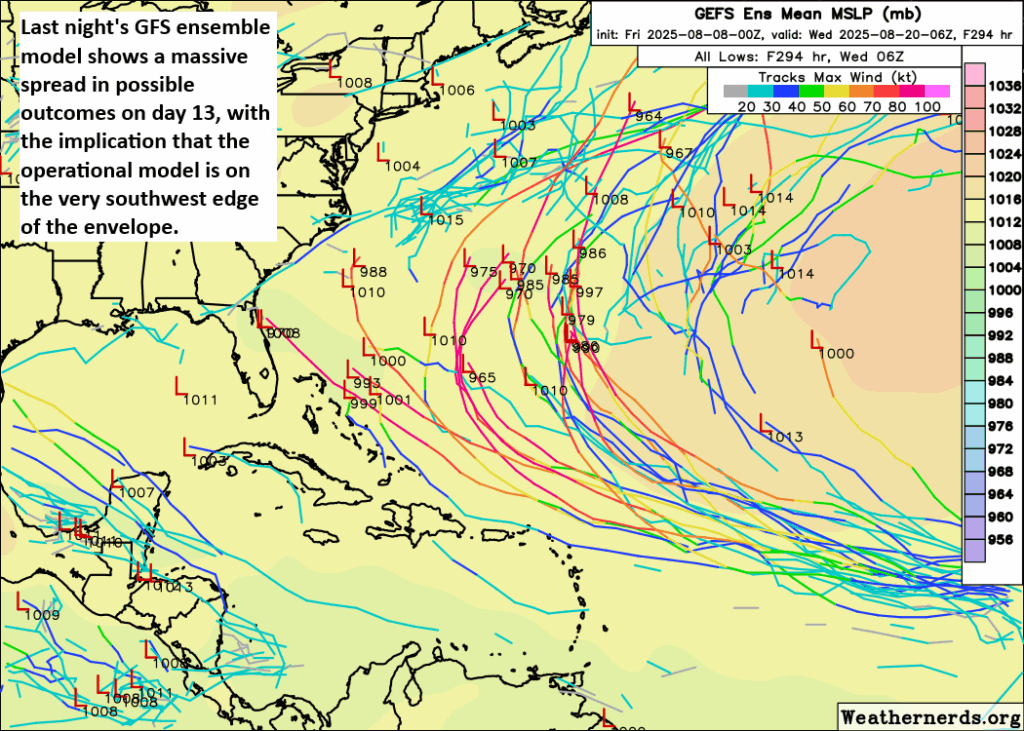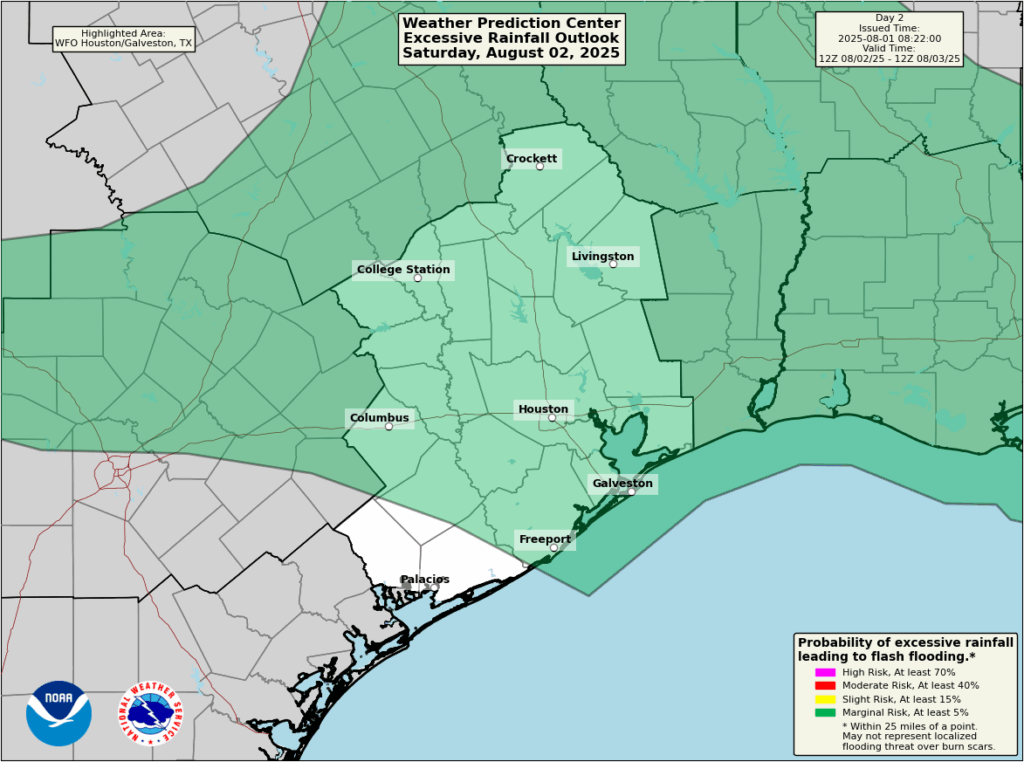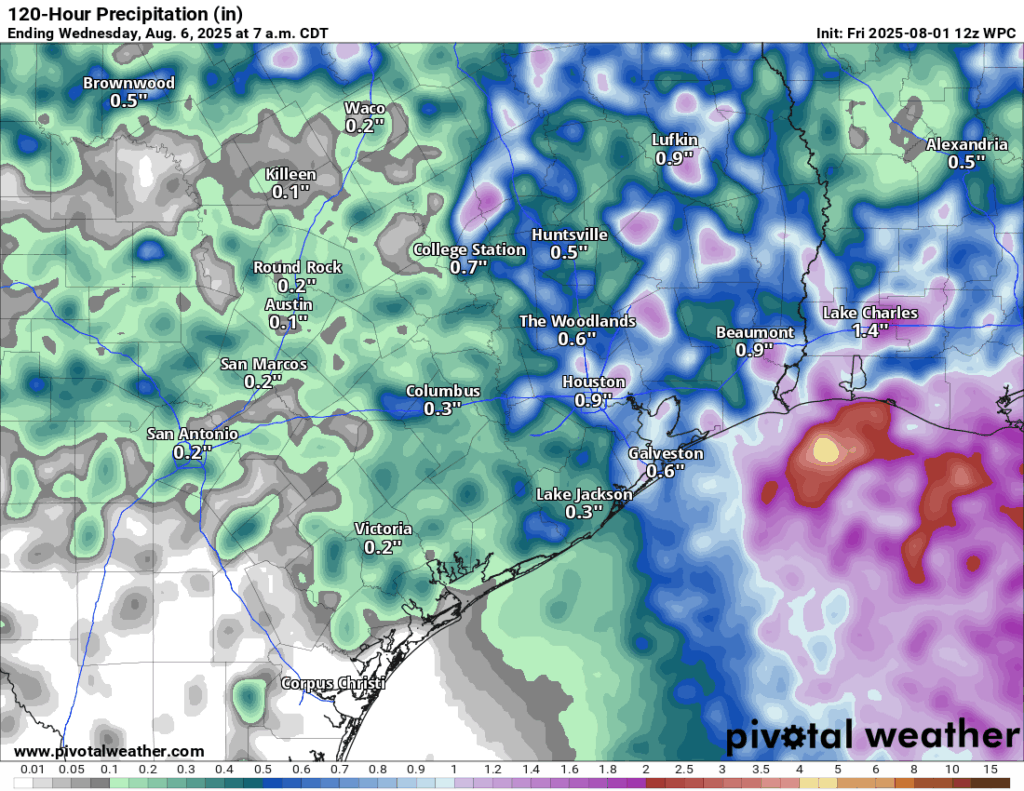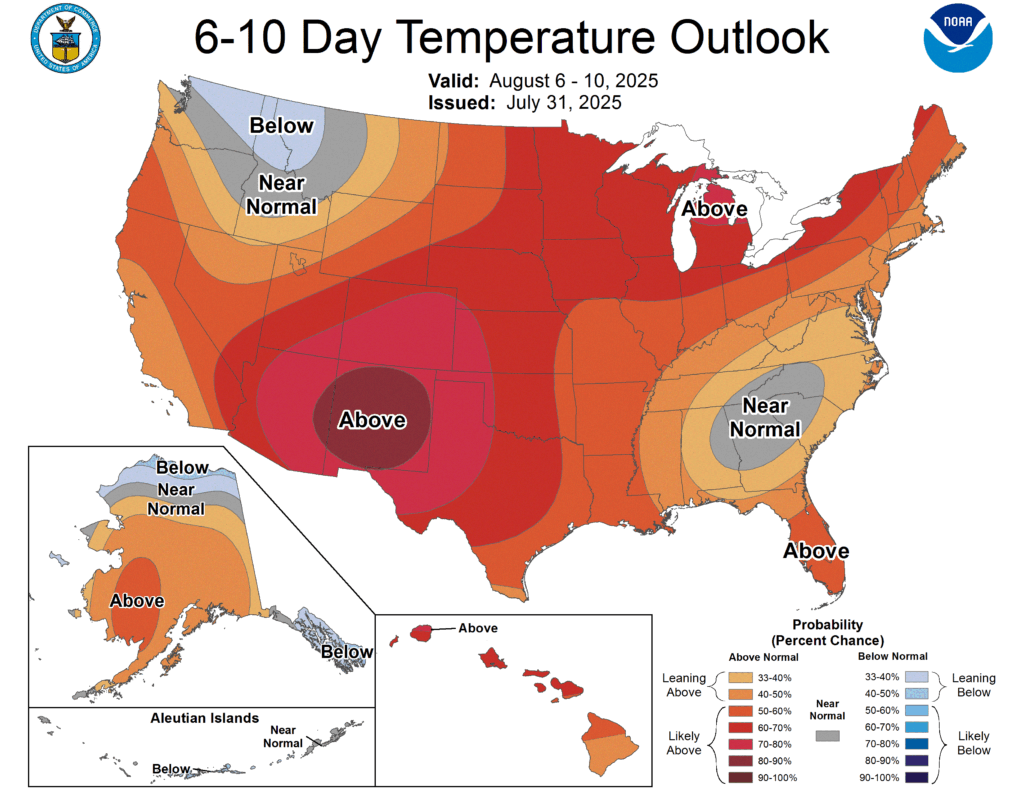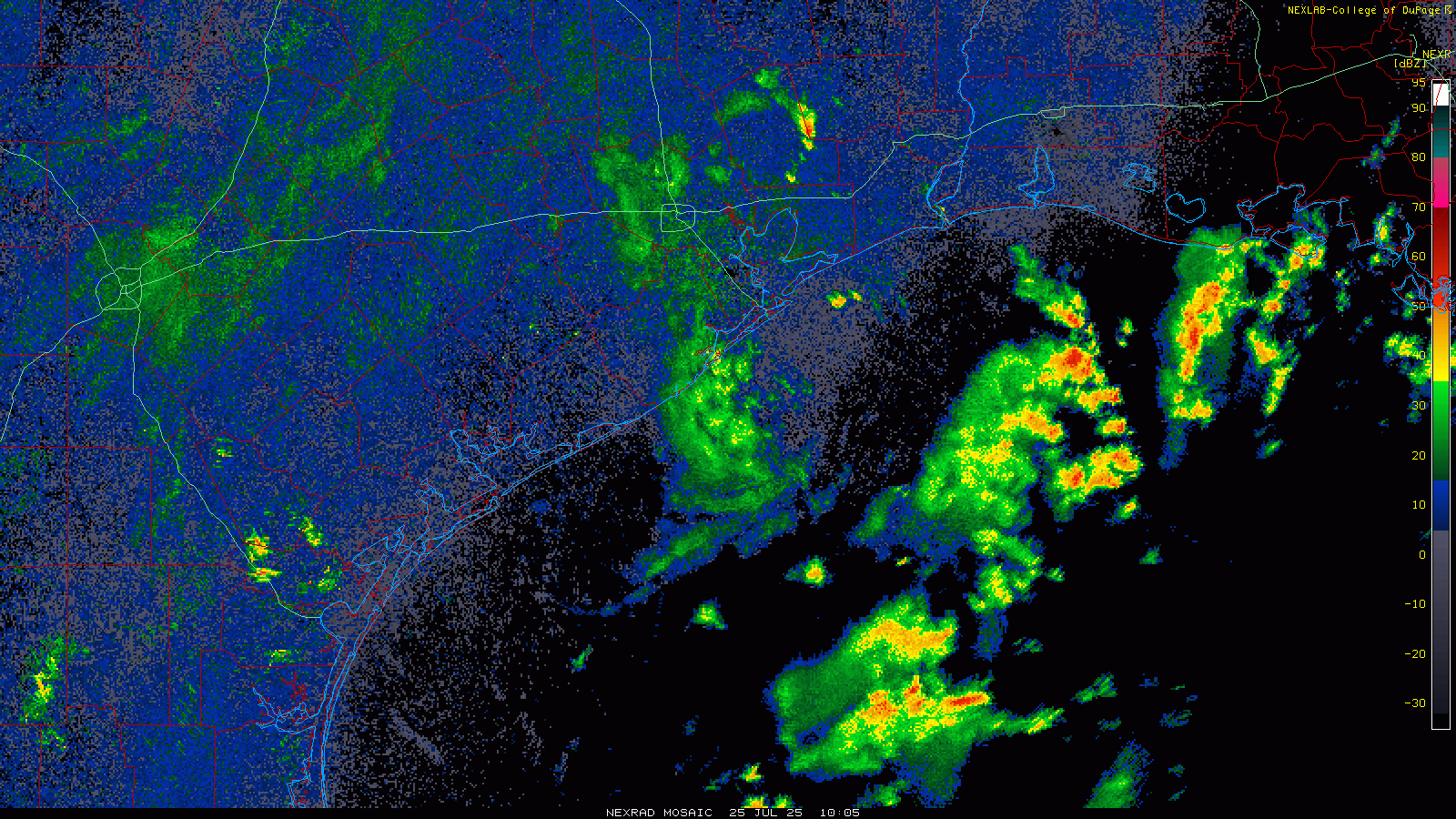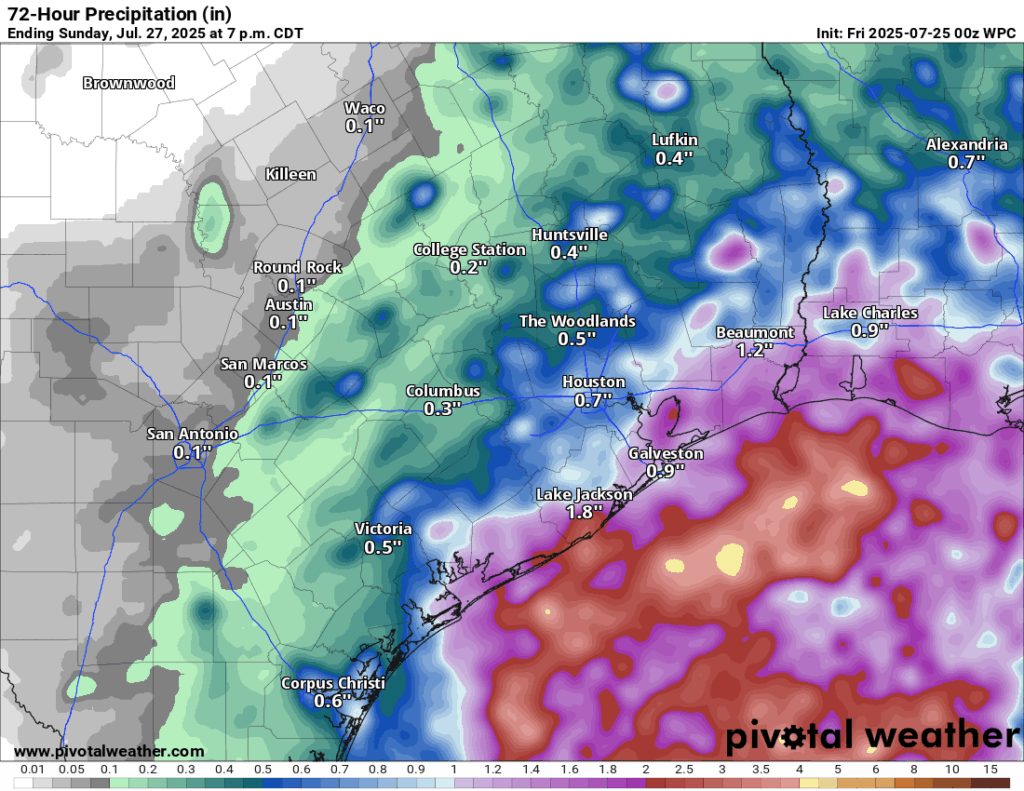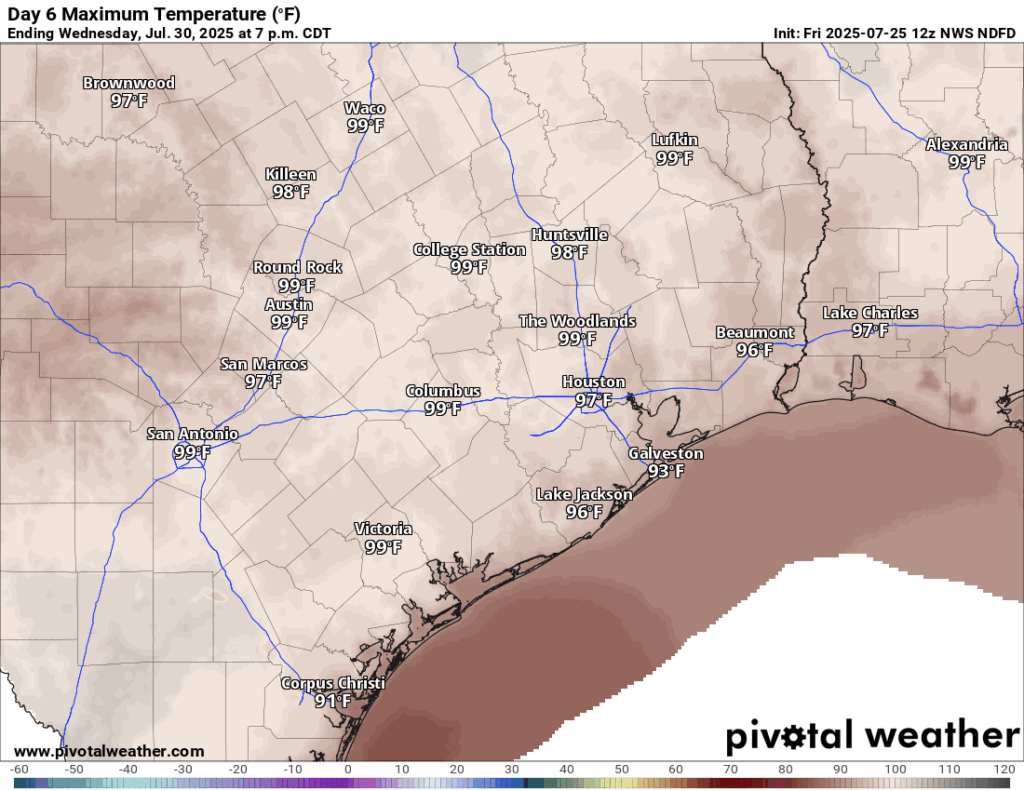In brief: Invest 98L, the Gulf tropical disturbance, will bring an enhanced chance of showers or storms to Houston today and Saturday, but nothing much more than that. After that exits, we maintain typical August weather with heat, humidity, and daily shower and storm chances.
Today/Invest 98L
First off, let’s get the elephant in the room taken care of: Invest 98L, the tropical disturbance approaching the South Texas coast is becoming less likely to develop now, particularly because it’s quickly running out of runway to work with. Odds remain 50% per the NHC, though if it does develop, it would be a tropical depression for about 3 to 6 hours or less before reaching land in South Texas.
That being said, it looks somewhat interesting on satellite this morning, conversationally at least.
This may look a little scary, but in reality, there is no low-level circulation so while there are some heavy thunderstorms and heavy rain underneath this blob of clouds, the system is not organizing much. So you can disregard any meaningful tropical development (wind, coastal flooding) elements of this for the most part.
What we will watch for at least is rain.
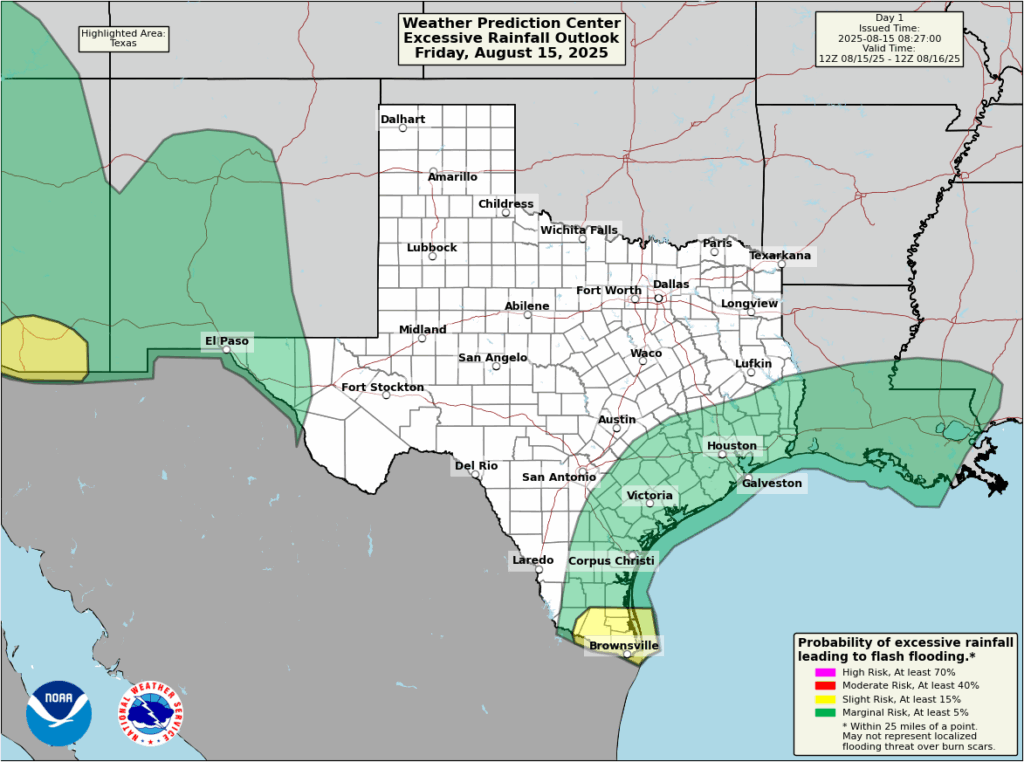
We don’t expect a ton of storms here today. But as this blob of storms lifts toward the coast, watch for development coinciding with daytime heating from Matagorda Bay up through Galveston, quickly moving inland. The one thing that will probably limit flooding is that storm motion today looks pretty quick. Unless we end up seeing several storms in a row over the same area, expect a few places to see perhaps an inch or two in less than an hour, some quick, minor street flooding, and then hopefully calmer weather. It’s possible that we also see a localized stronger storm with gusty winds as well.
Overall, the impacts of the tropical disturbance should be for a slightly more active August afternoon today. Even on slightly active days, some neighborhoods may not see any rain at all, so that’s possible too.
It’s extremely humid outside this morning as some of that added moisture works into the area. We had some of our warmest overnight lows of summer in some parts of the region yesterday, and we’ll be close to matching or exceeding them today (Jamaica Beach has not fallen below 86 degrees as of this writing for example).
Saturday
With the tropical disturbance dissolving inland, we’ll be left with added moisture and onshore flow Saturday. For now, I’d say this is pretty typical August weather, but I wouldn’t be entirely shocked to see a few repetitive thunderstorms that cause some minor street flooding tomorrow. Otherwise, just look for high humidity and warm to hot temperatures in the 90s.
Sunday & Monday
We should see relatively calm weather here, with just a continued slight chance of afternoon thunderstorms. Coverage should be a little less than it will be today and Saturday however. Highs in the mid-90s.
Rest of next week
High pressure is going to flex and expand in the Rockies and central Plains. This should open the door to some rain and thunderstorm chances out of Louisiana into southeast Texas, combining with sea breezes in the area to keep us somewhat active. Look for mid-90s continuing.

